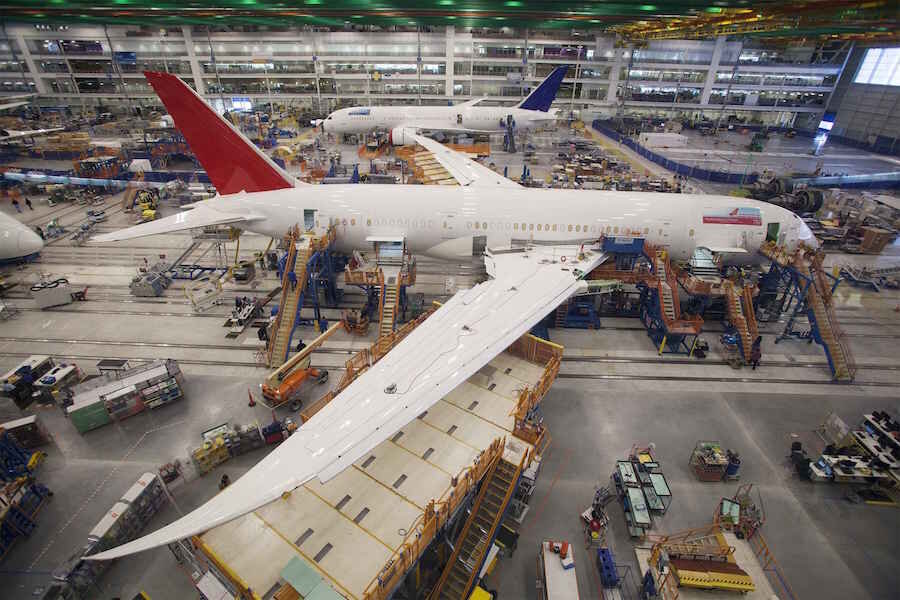Why Boeing will cut more than 4,500 jobs by June
Loading...
A more competitive Boeing means fewer employees.
The aerospace mammoth Boeing confirmed Tuesday that it will cut thousands of jobs by June. According to Reuters, about 4,000 positions will be stripped from its commercial airplane division and another 550 will be cut from from flight and lab testing. Boeing plans on shedding the positions through attrition and voluntary layoffs, not forced layoffs. Currently, Boeing employs about 160,000 people.
The company had previously announced a vague plan for job cuts in February, citing the need to cut jobs to compete but without a set date or target.
"To win in the market, fund our growth and operate as a healthy business, we are taking thoughtful steps to reduce the cost of designing and building our airplanes, part of which involves evaluating our employment levels across all of commercial airplanes," Boeing spokesman Doug Alder told reporters in a February statement.
But as the airline industry has expanded, what’s behind the current cuts?
The airline industry has boomed in the past years, especially for Boeing and Airbus. The aircraft manufacturing titans are turning out more planes and expanding into more markets, with assembly and manufacturing plants slated to open in China. In 2015, Boeing also exceeded its forecast for plane delivery, with a record 762 finished planes reaching clients.
But the company is also feeling the pressure of competition.
Despite the record deliveries, Airbus is overshadowing Boeing in future orders. Last year, Airbus won 1,036 new sales or 57 percent of the total new orders placed with Boeing and Airbus, according to The Guardian. Airbus also advanced into many key areas where Boeing once dominated, including winning 63 percent of single-aisle sales – a portion of the industry where Boeing's sales of 737s provided a significant contribution to the US company's total earnings.
During an internal webcast for employees, Boeing Commercial Airplanes CEO Ray Conner cited the single-aisle sales as one example of how Boeing was facing an expanding competition from Airbus. He called the situation "alarming," according to The Seattle Times.
“Their biggest weapon that they’re using in the competitions today is price,” Conner told employees. “They are attacking us with price in every single campaign. And as a result of that, you know, we’re being pushed to the wall.”
Boeing is also facing an intimidating backlog. As of December, Boeing's backlog was 5,795 unfilled orders for planes, which, according to BBC estimates would take seven and a half years at the current rate of production to complete. Buying airplanes years in advance is a tough sell for airlines that must account for many volatile factors, including oil prices, when purchasing additional aircraft.
“I cannot see how you cut employment 10 percent and keep production levels increasing,” Adam Pilarksi, senior vice president with Chantilly, Va.-based aviation consultancy Avitas, told The Seattle Times. “The two don’t go together. Something has to give.
Boeing's solution? Budget cuts.
"We have said consistently this year that we have to reduce costs to be competitive and that that would include employment reductions," Boeing Communication Director Chaz Bickers told The Christian Science Monitor via email. "The 4,000 figure is an expectation – not a target."
The company plans to cut 1,600 jobs through voluntary layoffs, according to Reuters. The cuts will initially be targeted toward executive and managerial level positions. Any other job cuts will be accomplished through attrition and keeping the positions that open up unoccupied.
The company's plan also includes looking at non-labor cost saving maneuvers, which could range from renegotiating contracts, streamlining its supply chain, and finding other areas where it can reduce spending. The success of those programs would determine if further job or budget cuts would be needed.
"The number of employees that may ultimately be affected depends on how successful we are at taking out cost through other means," Mr. Bickers told the Monitor.








